The Language of Nature: Symbolism Behind the Bee, Dragon, and More
ContributorStaff
Thu Feb 27 2025

Ever wonder why certain animals and symbols pop up in stories and art all over the world? It's because they carry a lot of meaning. From the busy bee to the mighty dragon, these symbols tell us a lot about different cultures and their values. Let's dive into the fascinating world of symbolism and see what these creatures and symbols really mean.
Ever wonder why certain animals and symbols pop up in stories and art all over the world? It's because they carry a lot of meaning. From the busy bee to the mighty dragon, these symbols tell us a lot about different cultures and their values. Let's dive into the fascinating world of symbolism and see what these creatures and symbols really mean.
Key Takeaways
- Bees symbolize hard work and community across many cultures.
- Dragons represent power and mystery, varying greatly between Eastern and Western cultures.
- Roses often stand for love and passion, with different colors offering unique meanings.
- Flamingos are seen as symbols of grace and balance in various cultures.
- Frogs symbolize transformation and rebirth, often featured in myths and folklore.
The Symbolism of Bees in Various Cultures
Bees as Symbols of Industry and Hard Work
Bees have long been admired for their industrious nature. Their relentless work ethic and ability to produce honey have made them symbols of diligence and productivity. In many cultures, bees are seen as emblems of community and teamwork. They work tirelessly from dawn to dusk, gathering nectar and ensuring the survival of their hive. This characteristic has often been used as a metaphor for human industriousness.
- Bees work together in harmony, each knowing their role.
- The hive functions efficiently, much like a well-organized society.
- Honey production is a result of their collective effort.
The Bee in Ancient Civilizations
In ancient times, bees held a significant place in various cultures. The Egyptians revered them as symbols of the soul and immortality. They were often associated with the sun god Ra, and honey was considered a gift from the gods. In Greek mythology, bees were linked to the goddess Artemis, representing fertility and nature's bounty.
Ancient artifacts often depict bees in sacred contexts, reflecting their importance in religious and cultural rituals.
Modern Interpretations of Bee Symbolism
Today, bees continue to be powerful symbols. They represent environmental awareness and the delicate balance of ecosystems. As pollinators, they play a crucial role in sustaining plant life, which is vital for human survival. Their decline has raised concerns about environmental health, making them symbols of ecological responsibility.
In contemporary art and literature, bees are often portrayed as messengers of change and resilience. They remind us of the importance of working together and respecting the natural world.
Dragons: Mythical Creatures Across Cultures
The Dragon in Chinese Mythology
Chinese dragons are fascinating creatures, deeply woven into the fabric of the culture. Unlike their Western counterparts, these dragons are not seen as evil or dangerous. Instead, they are symbols of power, strength, and good fortune. Chinese dragons are often depicted as long, serpentine creatures with the ability to control water, summoning rain and floods. They are believed to live in lakes, rivers, and seas, and are celebrated in festivals and art. The dragon is also a significant zodiac sign, representing prosperity and imperial power.
Dragons in Western Folklore
In Western folklore, dragons are often portrayed as fierce, fire-breathing beasts. These creatures are typically associated with chaos and destruction, often serving as formidable adversaries to heroes in myths and legends. Dragons in Western tales are usually depicted with large wings, sharp claws, and the ability to fly. They are often found guarding treasures or dwelling in caves, embodying the archetype of the monster to be vanquished.
Symbolic Meanings of Dragons
Dragons carry a variety of symbolic meanings across different cultures. In the East, they are revered as protectors and symbols of auspiciousness. In the West, they represent challenges and the unknown. Despite these differences, dragons universally symbolize a connection to the mystical and the powerful. Their presence in stories and art highlights humanity's fascination with the unknown and the supernatural, serving as a reminder of the balance between creation and destruction.
The Language of Flowers: Roses and Their Meanings
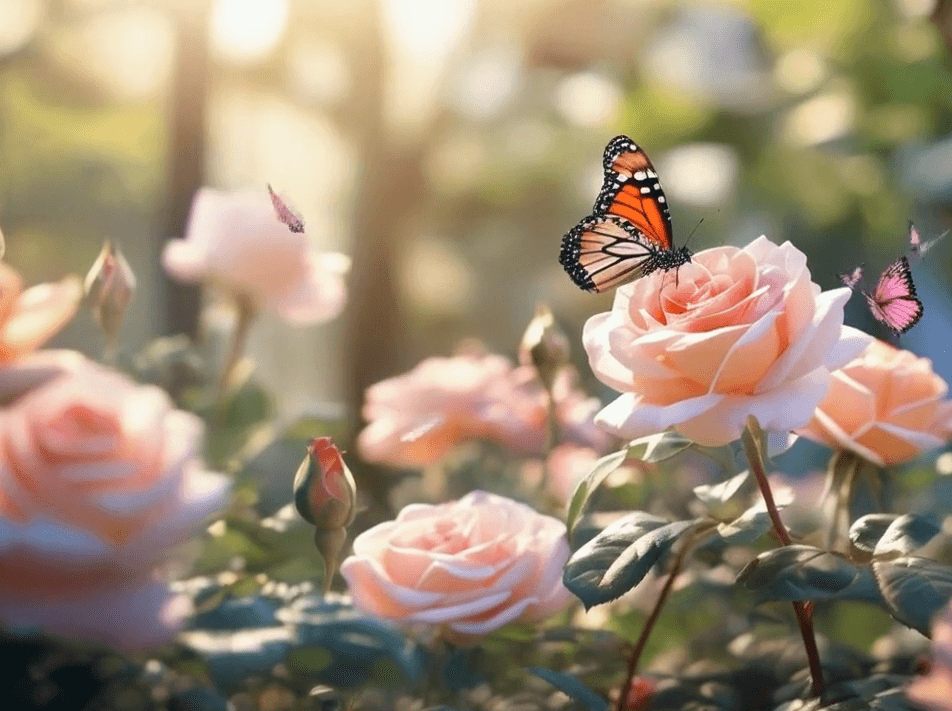
Roses in Literature and Art
Roses have long been cherished in literature and art, often symbolizing love and beauty. From Shakespeare's sonnets to modern poetry, the rose frequently appears as a metaphor for passion and romance. Artists, too, have captured the rose's delicate beauty and its complex symbolism, painting it as a symbol of both ephemeral beauty and enduring love. The rose, with its layers of petals, often represents the unfolding of emotions and the depth of human experience.
Cultural Significance of Roses
Across different cultures, roses carry varied meanings. In Greek mythology, the rose was associated with Aphrodite, the goddess of love, symbolizing desire and beauty. In Christianity, roses often symbolize the Virgin Mary and purity. Meanwhile, in Persian culture, the rose is a symbol of spiritual wisdom and beauty. This cultural diversity highlights the rose's universal appeal and its ability to convey profound messages across different societies.
Symbolism of Rose Colors
The color of a rose can significantly alter its meaning:
- Red Roses: Often symbolize love and passion, making them a popular choice for romantic occasions.
- White Roses: Represent purity and innocence, commonly used in weddings and religious ceremonies.
- Yellow Roses: Convey friendship and joy, often given to celebrate platonic relationships.
- Pink Roses: Symbolize gratitude and admiration, suitable for expressing appreciation.
Roses, with their vibrant colors and rich symbolism, continue to captivate our imaginations and emotions, serving as timeless messengers of love and beauty.
Flamingos: Grace and Balance in Symbolism
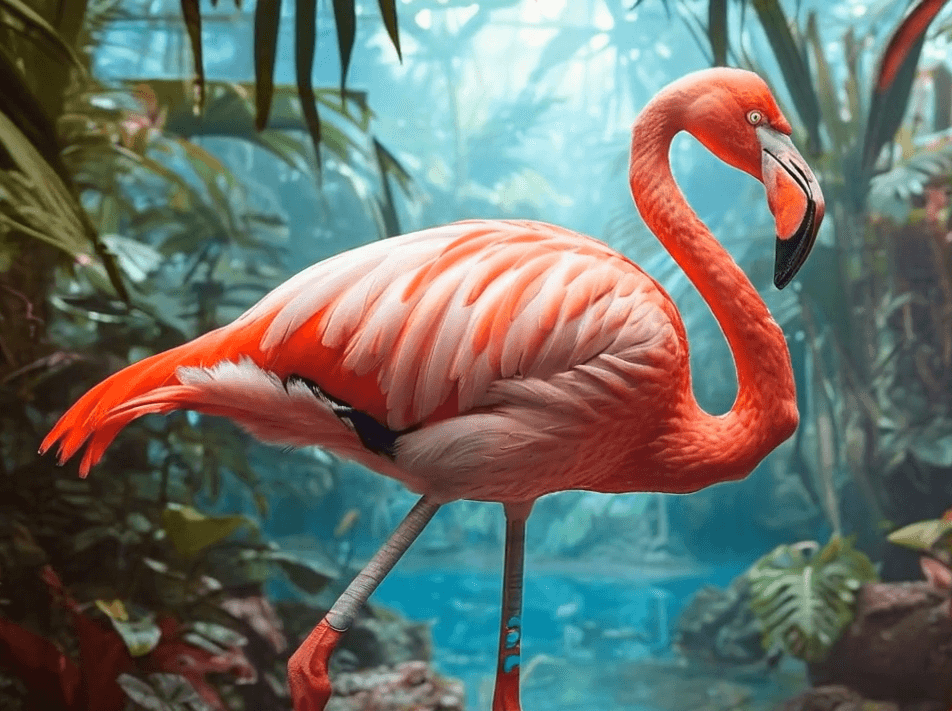
Flamingos in Art and Culture
Flamingos, with their striking pink feathers and elegant stance, have long been a subject of fascination in art and culture. Artists often depict these birds to symbolize beauty and poise. In ancient Egypt, flamingos were associated with the sun god Ra, embodying the fiery hues of the sunset. In modern times, flamingos have become icons of tropical beauty, often seen in home decor and fashion, symbolizing a carefree, exotic lifestyle.
Symbolic Meanings of Flamingos
Flamingos are more than just pretty birds; they carry a depth of symbolism. They are often seen as symbols of balance and grace. Their ability to stand on one leg for hours reflects a sense of stability and poise. Elegance is another key attribute, as their smooth, deliberate movements convey a sense of calm and serenity. In some cultures, flamingos are viewed as symbols of renewal and transformation, as their vibrant color comes from the food they consume, showcasing the idea of "you are what you eat."
Flamingos as Emblems of Elegance
The elegance of flamingos is unmatched in the animal kingdom. Their long necks and legs, combined with their vibrant plumage, make them a symbol of refined beauty. This elegance is often reflected in fashion and design, where flamingo motifs are used to convey sophistication. In literature and art, flamingos are frequently used as metaphors for grace and subtlety, emphasizing their role as emblems of elegance.
Frogs: Transformation and Rebirth

Frogs in Mythology and Folklore
Frogs have been part of human stories and beliefs for centuries. In ancient Egypt, frogs symbolized fertility and were linked to the goddess Heqet, who was often depicted with a frog's head. In Greek mythology, frogs are connected to the story of the goddess Hecate, who was said to have transformed her enemies into frogs. In many cultures, frogs are seen as creatures that bridge the gap between water and land, symbolizing transition and transformation.
Symbolism of Frogs in Different Cultures
Frogs are seen differently around the world. In China, they are often associated with prosperity and good fortune. A popular legend speaks of a three-legged money frog, which is believed to bring wealth. In Native American cultures, frogs are considered rain bringers, essential for agricultural success. In Japan, the word for frog, kaeru, also means "return," making frogs a symbol of safe journeys and homecomings.
Frogs as Symbols of Change
Frogs undergo a fascinating transformation from tadpoles to adults, making them powerful symbols of change and new beginnings. This metamorphosis is often used to represent personal growth and the ability to adapt to new situations. People see frogs as reminders that change, while sometimes challenging, can lead to new opportunities and development.
Frogs teach us that change is not only possible but necessary for growth. Their journey from water to land is a powerful metaphor for life's transitions, encouraging us to embrace the unknown and trust in the process of becoming.
Mariposa: The Butterfly's Journey
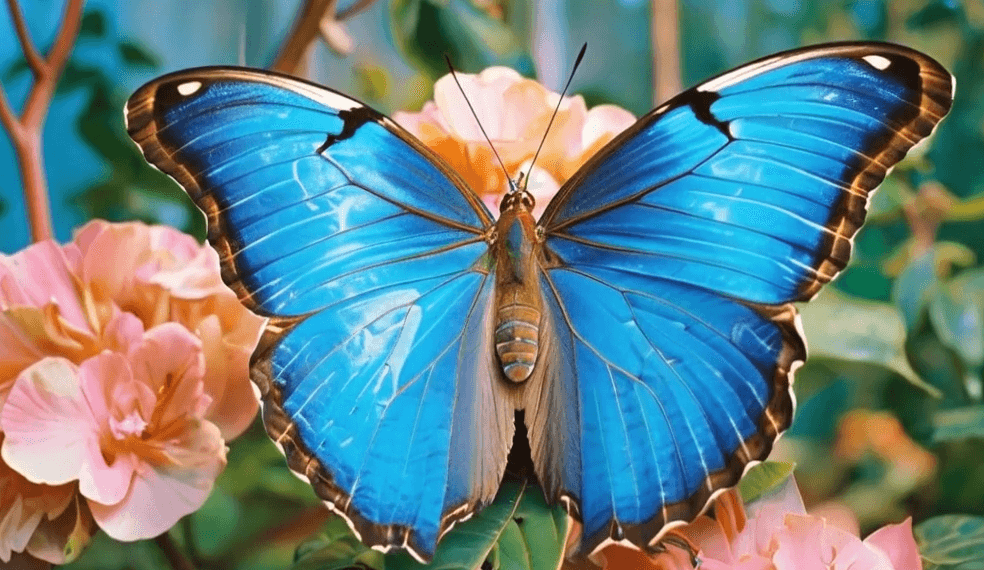
Butterflies in Art and Literature
Butterflies have fluttered their way into art and literature for centuries. They're often seen as symbols of transformation and beauty. In many cultures, the butterfly's metamorphosis from caterpillar to winged adult is a powerful metaphor for personal growth and change. Artists and writers alike have drawn inspiration from this process, using the butterfly to represent themes of rebirth and renewal. From ancient Chinese paintings to modern poetry, butterflies continue to captivate our imagination.
Symbolic Meanings of Butterflies
The symbolism of butterflies varies across different cultures. In some traditions, they are seen as messengers from the spirit world, while in others, they symbolize joy and hope. The butterfly's delicate nature and vibrant colors often make it a representation of the soul or the fleeting nature of life. In Japan, butterflies are associated with young women and marital happiness. Meanwhile, in Greece, the butterfly is linked to the psyche and the mind, embodying the idea of transformation and the journey of the soul.
Cultural Interpretations of Butterflies
Across the globe, butterflies hold various cultural significances. In Mexico, the annual migration of the Monarch butterfly is celebrated as a symbol of the souls of ancestors returning to visit the living. In Native American cultures, butterflies are seen as symbols of change and balance. They are often included in storytelling and folklore to convey lessons about adaptation and resilience. Each culture adds its own layer of meaning to the butterfly, making it a truly universal symbol of transformation and beauty.
The butterfly's journey is not just about change; it's a reminder of the beauty that can emerge from life's challenges. As it emerges from its cocoon, the butterfly teaches us about the potential for growth and renewal in our own lives.
Horses: Freedom and Power in Symbolism

Horses in Mythology and History
Horses have long been revered in various cultures, often symbolizing freedom and power. In Greek mythology, the horse is associated with Poseidon, the god of the sea, who created the first horse. The majestic creature is also linked to the sun god Helios, who drove a chariot pulled by fiery steeds across the sky. In Norse mythology, Sleipnir, Odin's eight-legged horse, represents strength and speed, emphasizing the horse's role as a powerful and mystical figure.
Symbolic Meanings of Horses
The symbolism of horses extends beyond mythology. Horses are often seen as emblems of freedom, representing the ability to roam vast landscapes without constraint. They also symbolize strength and power, often associated with warriors and kings who rode them into battle. In literature, horses frequently appear as symbols of nobility and grace, reflecting their esteemed status in human culture.
Cultural Significance of Horses
Throughout history, horses have played a vital role in human society. They have been indispensable in agriculture, transportation, and warfare, which has cemented their place in cultural narratives. In Native American cultures, the horse is a symbol of wealth and status, and is deeply revered. In modern times, horses continue to represent freedom and adventure, often associated with the open road and the spirit of exploration.
The horse, with its undeniable power and grace, remains a symbol of freedom and strength across cultures and eras. Its presence in art, literature, and mythology underscores its enduring significance and the deep connection humans have with these magnificent animals.
In the world of art and creativity, the horse's symbolism is as vibrant as the works of Amrita Sen, reflecting the dynamic interplay of strength and beauty.
Parrots: Communication and Color
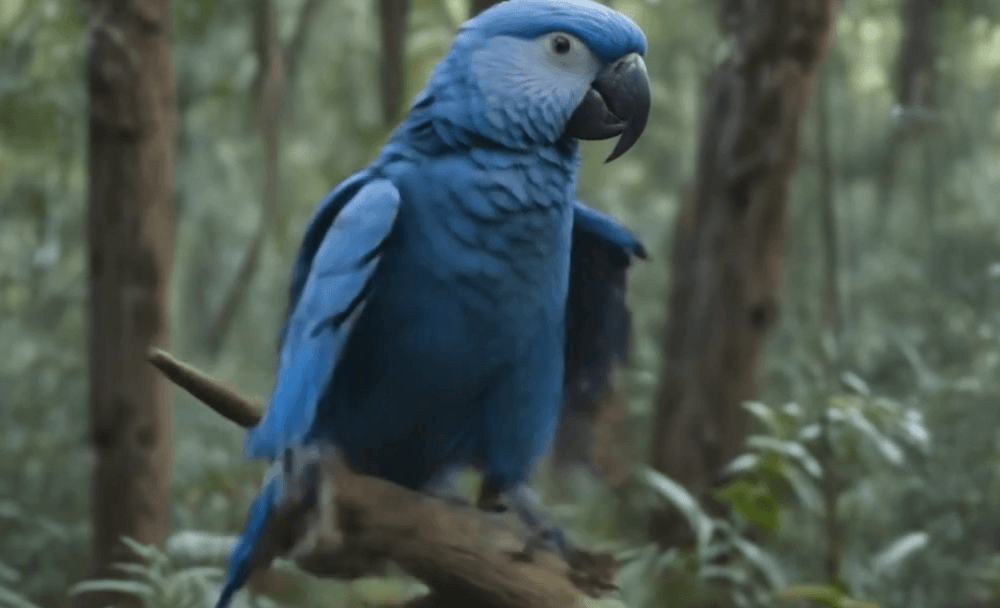
Parrots in Art and Culture
Parrots have long captured the human imagination, finding their way into art and culture across the globe. These vibrant birds, with their striking colors and ability to mimic human speech, have been featured in countless paintings, stories, and even religious texts. In many cultures, parrots are seen as messengers between the human and spiritual worlds, symbolizing communication and connection. Their vivid plumage and lively personalities make them a favorite subject for artists and storytellers alike.
Symbolic Meanings of Parrots
The symbolism of parrots is as colorful as the birds themselves. Often associated with communication, parrots are seen as symbols of expression and eloquence. Their ability to mimic human speech has led to them being viewed as mediators of knowledge and wisdom. In some cultures, parrots are believed to bring good luck and prosperity, while in others, they are seen as protectors against evil spirits. Their colorful feathers also symbolize beauty, vibrancy, and the diversity of life.
Parrots as Symbols of Expression
Parrots are not just symbols of communication but also of creativity and self-expression. Their ability to learn and repeat words makes them unique among birds, symbolizing the human capacity to learn and share knowledge. This trait has made them popular symbols in literature and art, representing the power of voice and the importance of being heard. Parrots remind us that expression can take many forms, whether through words, art, or the simple act of being present and engaged in the world.
Parrots, with their chatter and colors, teach us the beauty of diverse expressions, reminding us that every voice, no matter how small, has the power to make a difference.
Monkeys: Intelligence and Playfulness
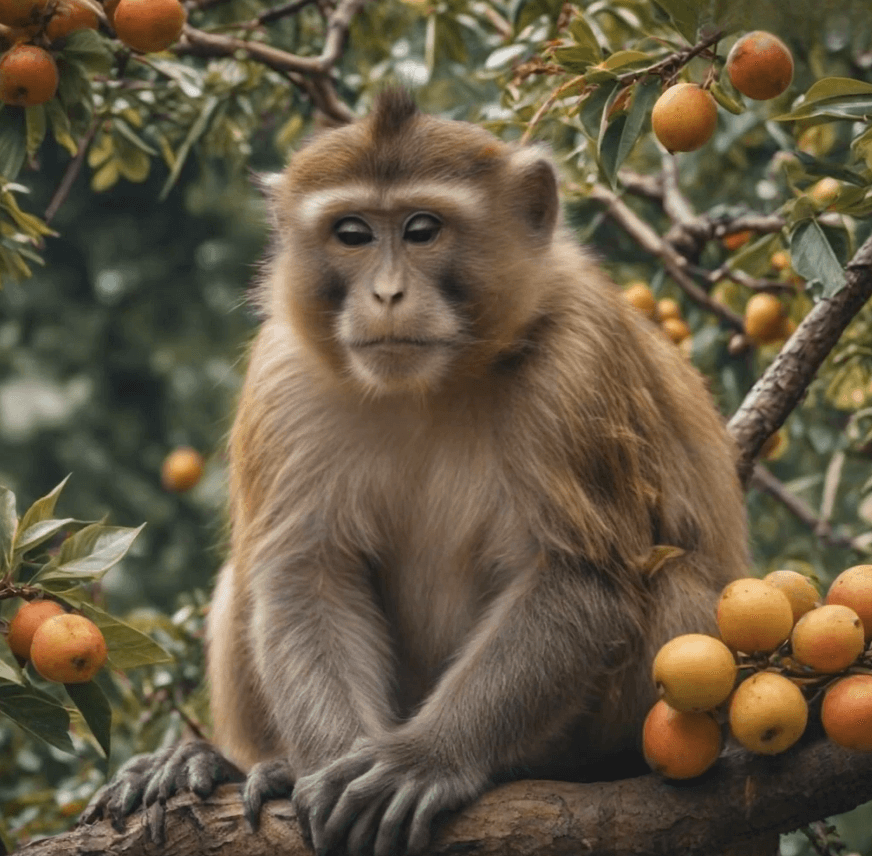
Monkeys in Mythology and Folklore
Monkeys have long been figures of fascination in various mythologies and folk tales. In Chinese culture, the monkey is celebrated as a clever and mischievous creature, prominently featured in the classic novel "Journey to the West". The Monkey King, Sun Wukong, is a beloved character known for his intelligence and playful antics. This character embodies the spirit of adventure and cunning. In Hindu mythology, Hanuman, the monkey god, is revered for his strength and devotion.
Symbolic Meanings of Monkeys
The symbolism of monkeys often revolves around their playful nature and intelligence. In many cultures, monkeys are seen as symbols of curiosity, adaptability, and cleverness. Their ability to mimic human behavior has also led to associations with social interaction and communication. Monkeys remind us of the importance of flexibility and humor in life.
Cultural Interpretations of Monkeys
Across different cultures, monkeys are interpreted in various ways. In some African traditions, they are seen as tricksters, using their wit to outsmart others. Meanwhile, in Japanese culture, the "three wise monkeys" represent the principle of "see no evil, hear no evil, speak no evil". In the Chinese zodiac, the monkey is the ninth animal, representing those born with qualities of intelligence and playfulness. Monkeys hold a special place in cultural narratives, often serving as a mirror to human behavior.
Monkeys, with their lively antics and sharp minds, have captured the human imagination for centuries. They serve as a reminder of both our primal instincts and our capacity for joy.
Axolotls: Mystical Creatures of Regeneration
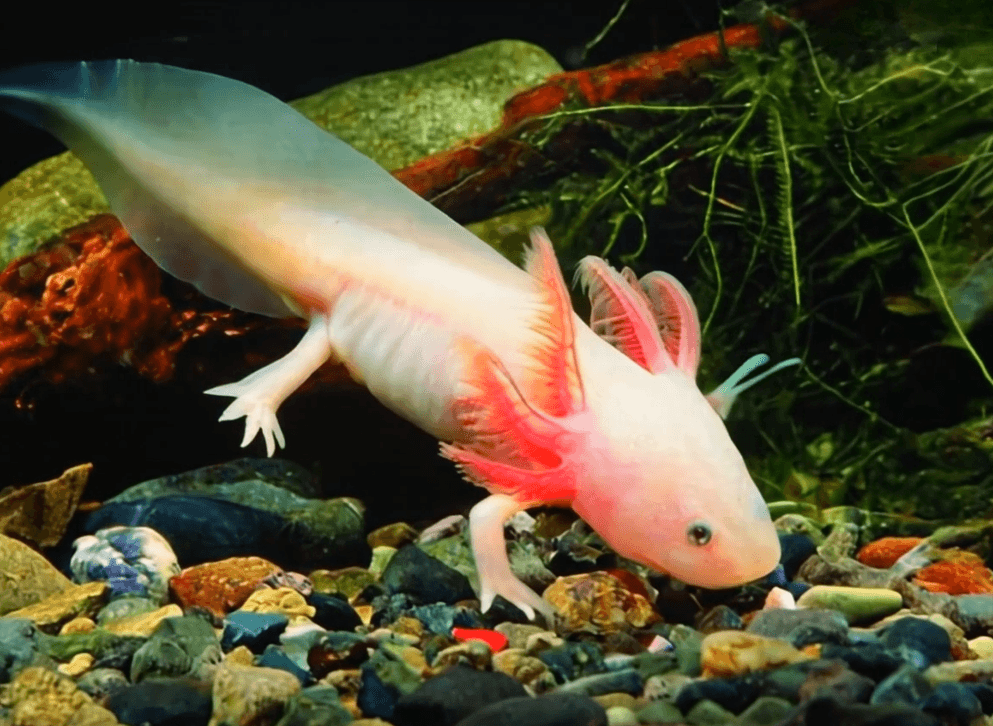
Axolotls in Science and Myth
Axolotls are fascinating creatures, often described as a blend of science and myth. Native to the lakes of Mexico, these amphibians are known for their unique ability to regenerate lost body parts, such as limbs, spinal cords, and even parts of their hearts and brains. This remarkable regenerative power has captured the imagination of many cultures, leading to their association with myths about rebirth and immortality. In Aztec mythology, the axolotl is linked to the god Xolotl, who transformed into this creature to avoid sacrifice.
Symbolic Meanings of Axolotls
The symbolism of axolotls is rich and varied. They are often seen as symbols of transformation and adaptability, representing the ability to overcome adversity and change. This symbolism is particularly relevant in today's world, where adaptability is crucial. Axolotls also embody innocence and purity, as they retain larval features throughout their lives, a condition known as neoteny. This characteristic adds to their mystical aura, making them a popular subject in art and literature.
Cultural Significance of Axolotls
In Mexican culture, the axolotl holds a special place, not only as a symbol of national heritage but also as a reminder of environmental challenges. The species is critically endangered due to habitat loss and pollution, prompting conservation efforts that emphasize the importance of preserving biodiversity. Axolotls have also found their way into popular culture, appearing in films, video games, and even as mascots for environmental campaigns. Their unique appearance and abilities make them a powerful symbol of nature's resilience and the ongoing struggle for survival in a changing world.
Peacocks: Beauty and Pride in Symbolism
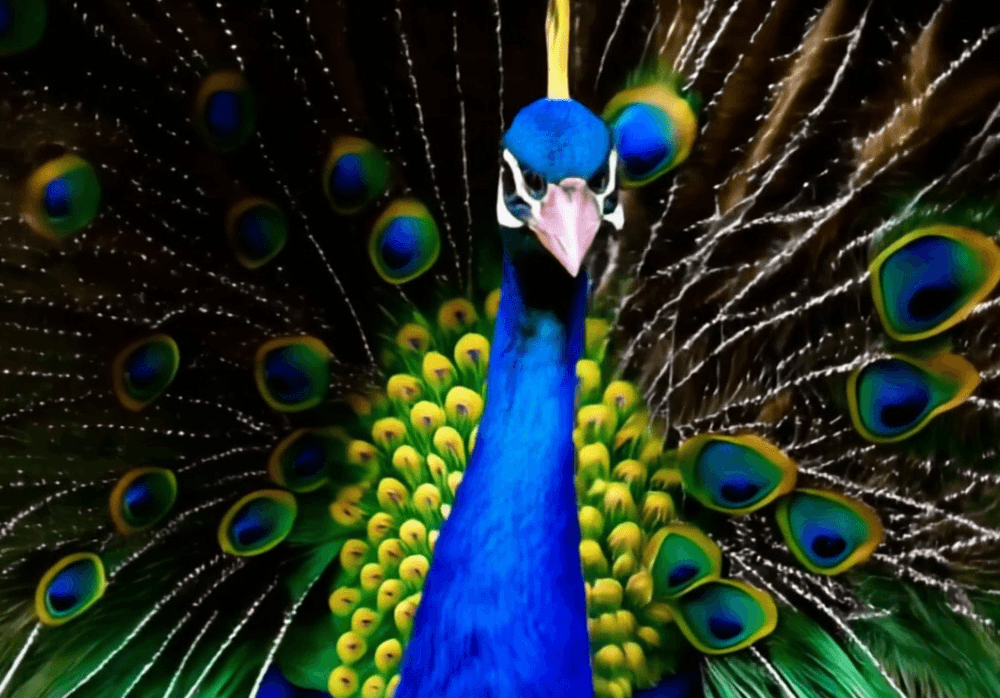
Peacocks in Art and Culture
Peacocks have long been admired for their vibrant plumage and graceful demeanor. Throughout history, they have been featured in various forms of art, from ancient frescoes to modern paintings, symbolizing beauty and elegance. In many cultures, peacocks are seen as a representation of immortality and renewal due to their ability to shed and regrow their feathers. Their striking appearance has made them a popular subject in art and culture, often embodying the idea of beauty itself.
Symbolic Meanings of Peacocks
The symbolism of peacocks extends beyond their physical beauty. They are often associated with pride and vanity, given their tendency to display their feathers in a grandiose manner. In some cultures, peacocks are seen as a symbol of protection and watchfulness, as their eye-like feather patterns are believed to ward off evil spirits. Furthermore, their majestic appearance is sometimes linked to royalty and power, making them a symbol of prestige.
Peacocks as Symbols of Vanity
Peacocks are frequently used as a metaphor for vanity and self-importance. Their ostentatious display of feathers is often likened to human behavior, where individuals flaunt their accomplishments or possessions. This symbolism is prevalent in literature and folklore, where peacocks are depicted as creatures that relish in their own splendor. However, this vanity is not always viewed negatively; in some contexts, it is seen as a natural expression of one's unique qualities and strengths.
Peacocks, with their dazzling displays, remind us of the power of self-expression and the beauty of embracing one's true self. While their symbolism often centers around vanity, it also highlights the importance of celebrating individuality and the unique attributes that define us.
Whales: Guardians of the Ocean

Whales in Mythology and Folklore
Whales have long been seen as majestic creatures of the sea, appearing in myths and folklore across the globe. In many cultures, they are considered symbols of strength and wisdom. For instance, in some Native American tribes, whales are revered as protectors of the ocean, believed to guide and guard the seas. In Norse mythology, the whale was seen as a giant sea monster, embodying both fear and fascination. These myths highlight the whale's role not just as a creature of the ocean but as a powerful symbol of the mysteries and depths of the sea.
Symbolic Meanings of Whales
The symbolism of whales is rich and varied. Whales often represent emotional depth and intuition, reflecting their mysterious and gentle nature. They are seen as symbols of balance, reminding us of the importance of harmony between our emotions and the world around us. The whale's ability to navigate vast oceans with ease symbolizes guidance and the ability to find one's path in life. Furthermore, their songs, which travel great distances underwater, represent communication and the sharing of wisdom.
Cultural Interpretations of Whales
Different cultures have unique interpretations of the whale's symbolism. In Maori culture, the whale is a revered ancestor and a symbol of protection and guidance. In contrast, in some Asian cultures, whales are seen as harbingers of good luck and prosperity. A common thread in these interpretations is the whale's role as a guardian and a symbol of the ocean's vastness and mystery. These cultural views underscore the whale's importance not just as a marine creature but as a powerful emblem of nature's grandeur and the interconnectedness of all life.
Whales, with their immense size and gentle nature, remind us of the ocean's vastness and the mysteries it holds. They symbolize the balance and harmony that exist within the natural world, urging us to respect and protect our planet's precious resources.
Conclusion
In wrapping up our exploration of nature's symbols, it's clear that creatures like bees and dragons are more than just animals; they're rich with meaning. Bees, for instance, are often seen as symbols of hard work and community, buzzing around with purpose and dedication. Meanwhile, dragons, with their mythical allure, represent power and transformation across various cultures. These symbols remind us that nature is a storyteller, weaving tales of life, strength, and change. By understanding these symbols, we gain a deeper appreciation for the world around us, seeing it not just as a collection of living things, but as a tapestry of stories and meanings waiting to be discovered.
Frequently Asked Questions
What do bees symbolize in different cultures?
Bees are often seen as symbols of hard work, cooperation, and productivity. In many cultures, they also represent community and the importance of working together.
How are dragons viewed in Chinese mythology?
In Chinese mythology, dragons are powerful and benevolent creatures. They symbolize strength, luck, and authority and are often associated with water and weather control.
What do roses represent in literature and art?
Roses are commonly used to symbolize love and beauty. Different colors of roses can have various meanings, such as red for love, white for purity, and yellow for friendship.
Why are flamingos considered symbols of grace?
Flamingos are often associated with grace and balance because of their elegant appearance and ability to stand on one leg for long periods.
What do frogs symbolize in mythology?
Frogs are symbols of transformation and rebirth. In many myths, they represent change, adaptability, and the cycle of life due to their life stages from tadpole to adult frog.
How are butterflies interpreted in different cultures?
Butterflies are seen as symbols of transformation and freedom. They often represent the soul or the idea of change and new beginnings in various cultures.
What do horses symbolize in history and mythology?
Horses are symbols of freedom, power, and strength. They have been important in many cultures for their role in transportation, agriculture, and warfare.
Why are parrots associated with communication?
Parrots are known for their ability to mimic human speech, making them symbols of communication and expression. Their bright colors also represent vibrancy and diversity.
Read More:
seeing an owl at night spiritual meaning
previous
Leonardo da Vinci Wisdomia AI Agent
next
Masterminds of Creation: The Best Architects and Engineers Who Shaped Our World
Share this

Contributor
Staff
The team of expert contributors at Businessabc brings together a diverse range of insights and knowledge from various industries, including 4IR technologies like Artificial Intelligence, Digital Twin, Spatial Computing, Smart Cities, and from various aspects of businesses like policy, governance, cybersecurity, and innovation. Committed to delivering high-quality content, our contributors provide in-depth analysis, thought leadership, and the latest trends to keep our readers informed and ahead of the curve. Whether it's business strategy, technology, or market trends, the Businessabc Contributor team is dedicated to offering valuable perspectives that empower professionals and entrepreneurs alike.
More Articles

Elder Voices of the Millennium: William Kentridge

Vince Zampella's Legacy: Remembering a Gaming Industry Visionary Who Shaped Modern Gaming

IQ, EQ and SQ: Why Education Ignores the Third Axis

The Digital Convergence: When Images Became Everything, Everywhere, All at Once

Modern Revolutions and the Digital Explosion: Images That Shattered and Rebuilt Reality





